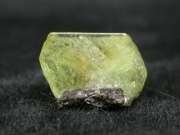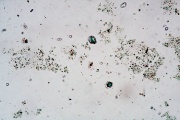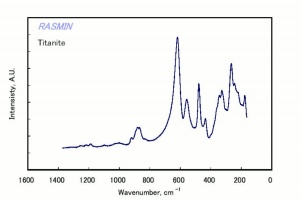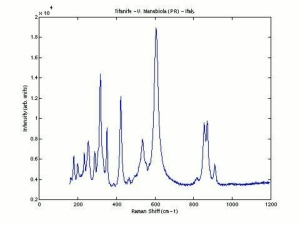Difference between revisions of "Sphene"
Jump to navigation
Jump to search
| Line 1: | Line 1: | ||
[[File:double_Otto van Venius_1580.jpg|thumb|'''''Otto van Venius (Veen)''''']] | [[File:double_Otto van Venius_1580.jpg|thumb|'''''Otto van Venius (Veen)''''']] | ||
== Description == | == Description == | ||
| − | + | [[File:pt20729titanite.jpg|thumb|Titanite]] | |
| − | Small yellow, green or brown crystals occasionally used as gemstones. Sphene is composed of calcium titanium silicate | + | Small yellow, green or brown crystals (also called titanite) occasionally used as gemstones. Sphene is composed of calcium titanium silicate and is often found associated with granite. Sphene has good luster and fire but is too soft for general wear. Gem quality sphene crystals come from the Austrian and Swiss Alps, Myanmar, Canada (Ontario) and the U.S. (California, New York, Montana). |
| − | + | [[File:sphene_corrected2.jpg|thumb|Sphene crystals]] | |
== Synonyms and Related Terms == | == Synonyms and Related Terms == | ||
titanite; esfena, titanita (Esp.); esfena (Port.); Sphen, Titanit (Deut.); sfeen (Ned.) | titanite; esfena, titanita (Esp.); esfena (Port.); Sphen, Titanit (Deut.); sfeen (Ned.) | ||
| − | + | [[[SliderGallery rightalign|TitaniteRS.jpg~Raman (RASMIN)|Titaniteitaly1.jpg~Raman (U of Parma)]]] | |
| − | [[ | ||
== Physical and Chemical Properties == | == Physical and Chemical Properties == | ||
| − | * Monoclinic system, often forming wedge-shaped, twinned crystals; sometimes compact, massive | + | * Monoclinic system, often forming wedge-shaped, twinned crystals; sometimes compact, massive |
| − | * Distinct cleavage in parallel planes | + | * Distinct cleavage in parallel planes |
| − | * Luster = adamantine to resinous | + | * Luster = adamantine to resinous |
| − | * Fracture = conchoidal | + | * Fracture = conchoidal |
* Streak = white | * Streak = white | ||
| + | * Fluorescence = none | ||
{| class="wikitable" | {| class="wikitable" | ||
Revision as of 14:10, 19 December 2022
Description
Small yellow, green or brown crystals (also called titanite) occasionally used as gemstones. Sphene is composed of calcium titanium silicate and is often found associated with granite. Sphene has good luster and fire but is too soft for general wear. Gem quality sphene crystals come from the Austrian and Swiss Alps, Myanmar, Canada (Ontario) and the U.S. (California, New York, Montana).
Synonyms and Related Terms
titanite; esfena, titanita (Esp.); esfena (Port.); Sphen, Titanit (Deut.); sfeen (Ned.)
Physical and Chemical Properties
- Monoclinic system, often forming wedge-shaped, twinned crystals; sometimes compact, massive
- Distinct cleavage in parallel planes
- Luster = adamantine to resinous
- Fracture = conchoidal
- Streak = white
- Fluorescence = none
| Composition | CaTiSiO5 |
|---|---|
| Mohs Hardness | 5.0 - 5.5 |
| Density | 3.4-3.6 g/ml |
| Refractive Index | 1.84 - 2.11 |
Resources and Citations
- Mineralogy Database: Titanite




